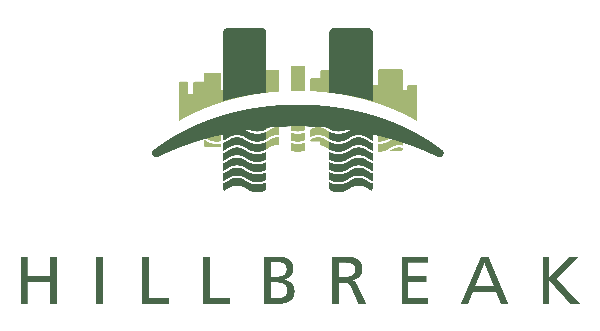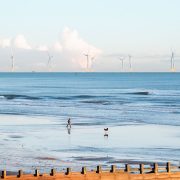Strategic Foresight: Stage 2 – Scanning the Horizon
Scanning the Horizon
In this second article in our six-part series on Conducting Corporate Foresight, we focus on the Scanning the Horizon phase, which follows on from having established the Strategic Question that the Foresight process seeks to answer.
Purpose
A prerequisite of all serious strategic policy studies is “Horizon Scanning”, alternatively known as environmental scanning. This stage in the Corporate Foresight process is not about making predictions, or even forecasts, but is a systematic exploration and investigation of evidence and ideas about future issues and trends. Sometimes it is described as creating a ‘systems map’ of the activity or organisation under consideration; but we prefer to add the power of ‘radar’ to this simile. Profound change invariably starts as a ‘blip’ or ‘weak signal’ on the periphery, and companies in complex, rapidly changing environments require well-developed peripheral vision and an alert sense of anticipation.
Conceptual Method
Effective horizon scanning needs structure. Probably the most familiar framework for searching the external contextual system for emerging trends surrounding an issue or organisation is “STEEP”, an acronym which we have modified to mean:
- Societal and Cultural;
- Technological and Innovative;
- Economic and Financial;
- Environmental and Ethical; and,
- Political and Governance.
Essentially, STEEP allows for a broad examination of the environment, identifies the major forces of change and detects signals that might drive, disrupt or deflect them.
Alongside the STEEP taxonomy, at Hillbreak, we employ a “Three Horizons” framework which gives a richer meaning to the more traditional ‘short-medium-long’ term thinking commonly adopted:
- Evolutionary; operating and developing within today’s dominant pattern along the lines of “business-as-usual” and extending the core.
- Transitional; a zone of ambiguous innovation where new ways of doing things are appearing and potential ‘rising stars’ are emerging that could, over time, become pioneering core business.
- Transformative; a future pattern and fresh landscape of conducting commerce arising from changing conditions, new knowledge and altered priorities and values which convert the very nature of the particular industry.
More of an exploratory perspective than a planning tool, the Three Horizons technique can be used as a second axis with STEEP in providing a fuller framework for researching and recording potential change over time. Metrics can also be applied, where appropriate, to the drivers and issues involved. Such scanning has been sophisticated over recent years with the rise in knowledge management software, but we would still verge on the qualitative rather than the quantitative side of consultancy practice at this stage in the corporate foresight process.
Practical Guidelines
Just over a decade ago, a revelatory survey of 140 corporate strategists, showed that fully two-thirds of respondents had been surprised by as many as three high-impact competitive events in the previous five years, and a shocking 97% said that their companies lacked an early-warning system. Little, we would argue, has changed since then, as subsequent happenings have surely demonstrated.
Horizon Scanning should be a permanent, structured and continuous process, embedded into the policy and planning procedures of any organisation. In doing so, and in addition to framing the right question, we would suggest the following practical guidelines:
- Adopt a global perspective and a longer, broader view.
- Start by looking backwards, assuming that the patterns of the past will largely continue into the future.
- Do not reinvent the wheel; there are many excellent studies of future possibilities already published from which to draw.
- Be wary that past success can lead to complacency and constrained thinking; remembering that all performance across organisations tends to follow the familiar “S-curve”.
- Conduct a stakeholder analysis with the following questions in mind:
- Who is key to decision-making at this time?
- What really matters to the parties involved?
- Who are the customers with a high interest in the organisation?
- Which predatory stakeholders seek to do the organisation harm?
- Integrate the internal workings of the organisation with the external developments of the world around.
- Explore unfamiliar areas and consult ‘remarkable people’.
- Organise effectively for scanning with responsibilities properly assigned.
- Identify past blind-spots and question what is happening in these areas now.
- Search to see if there is an instructive analogy from another industry.
- Check to find who in your industry is skilled at picking-up early signals and acting on them ahead of everyone else.
- Make sure you are not ‘rationalising away’ any important signal, for nearly all surprises have visible antecedents, yet people have a powerful tendency to ignore warning signs that contradict their own preconceptions.
- Listen to what your maverick colleagues or informed ‘outliers’ across the industry are trying to tell you.
- Find out what your peripheral customers and competitors are really thinking, for there is much to be learned from complainers and defectors, as well as obscure and less immediate rivals.
- Ask what future surprises could really hurt, or indeed help, the organisation; as well as what emerging technologies could fundamentally change the game. Is there, in fact, an ‘unthinkable’ scenario?
Organisations with a constant horizon scanning capacity and strong peripheral vision will always gain significant advantage over their rivals. They will recognise risk more readily and reorganise accordingly. They will perceive and act on opportunity smartly and in front. As the business environment changes apace and becomes more uncertain, payoffs from scanning and vision will be greater than ever. As Charles Darwin popularly pronounced:
“It’s not the strongest of the species who survive, nor the most intelligent, but the ones most responsive to change.”














